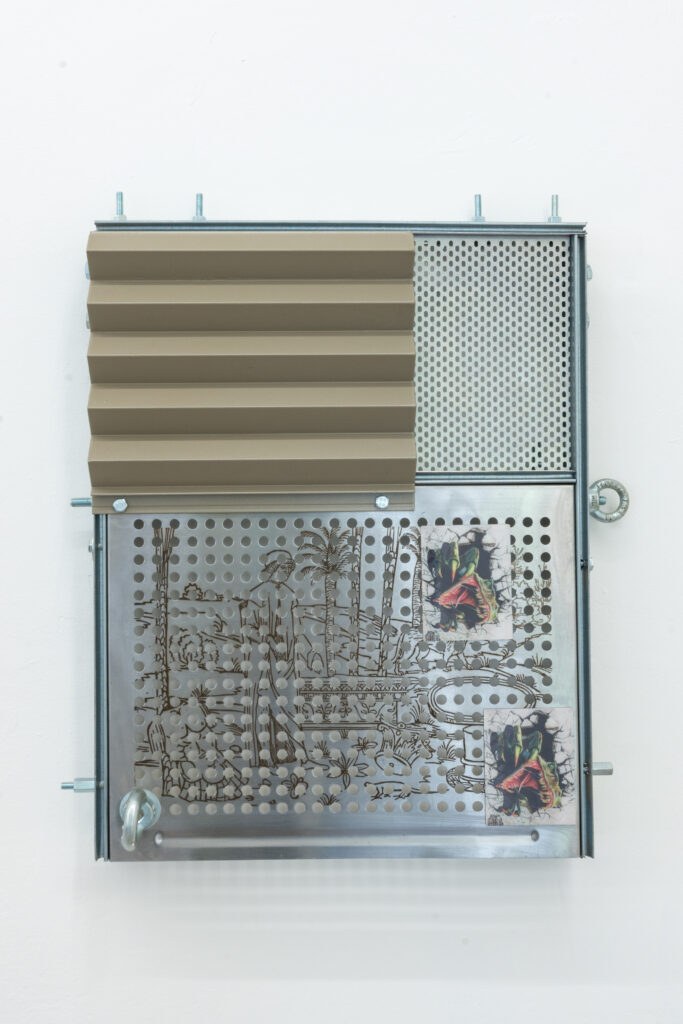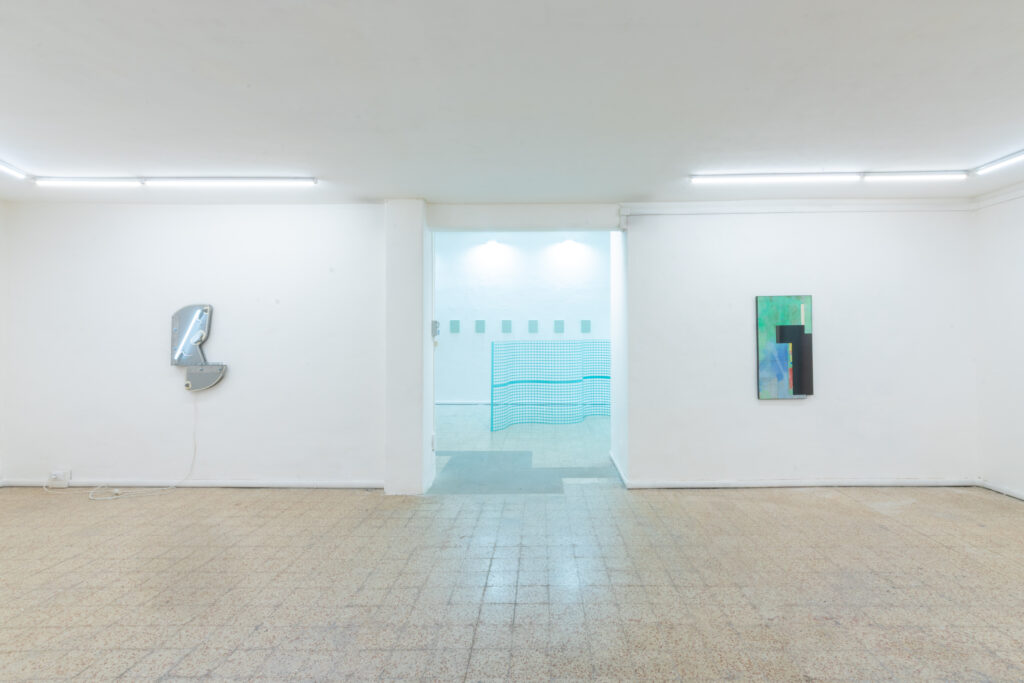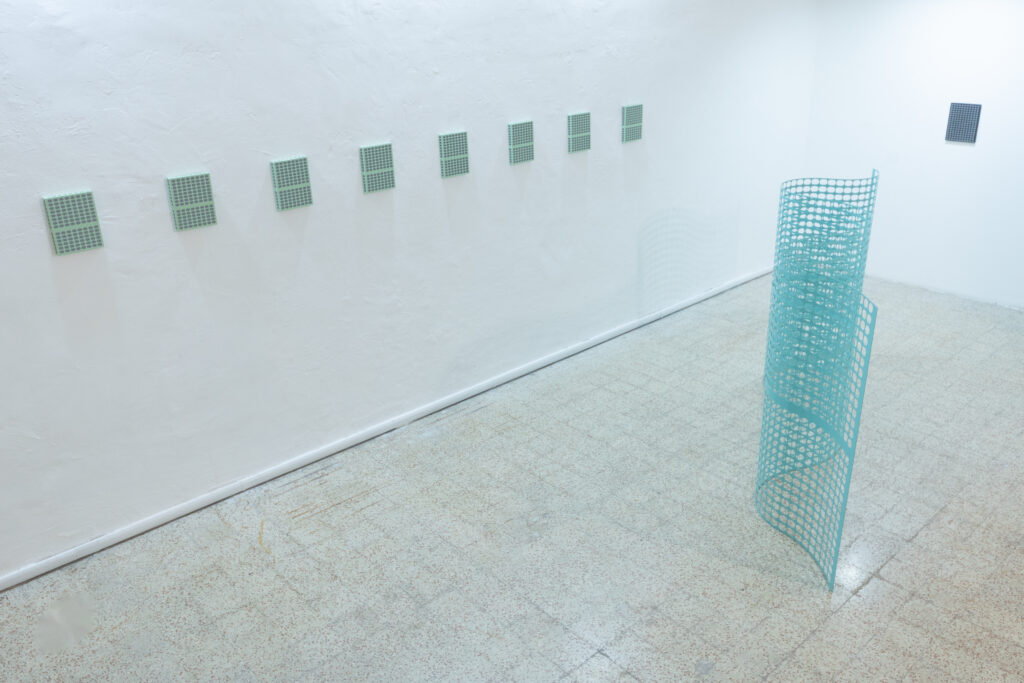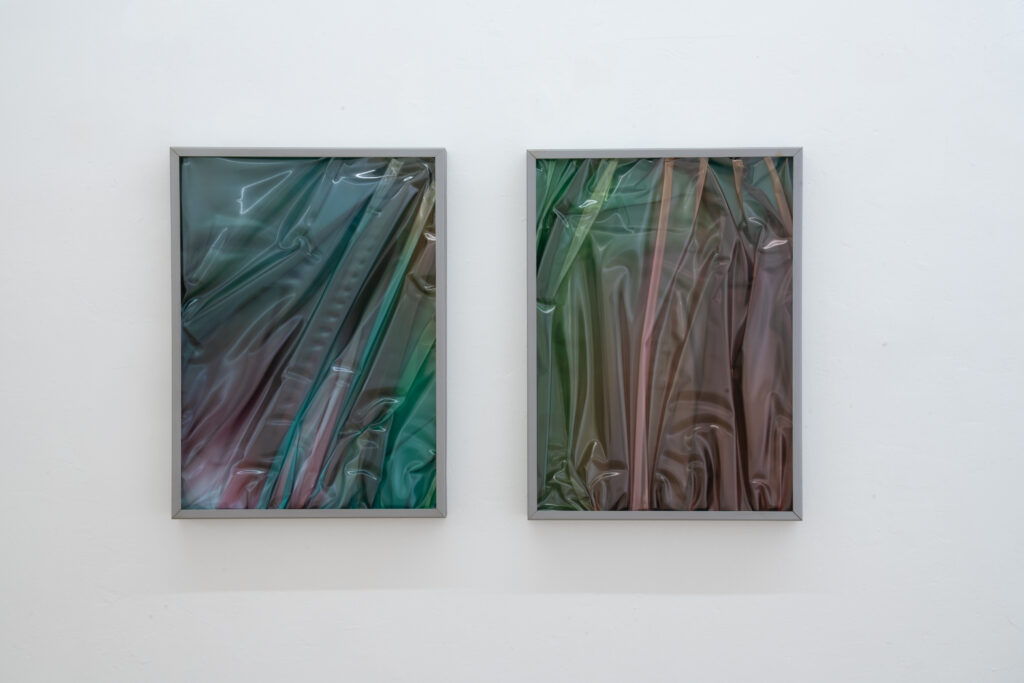MEMBRANE














Through the deeply personal and diverse research of artists Bram Braam (*1980, Netherlands), Giovanni de Cataldo (*1990, Rome), Inma Femenía (*1985, Pego), Tycjan Knut (*1985, Warsaw), Vikenti Komitski (*1983, Sofia), and Alessandro Vizzini (*1985, Cagliari), MEMBRANE seeks to investigate the relational space in which matter becomes a configuration of the relationship between subjects and objects. Not merely surfaces, but membranes understood as sites of mediation, where even time becomes material space—a living environment for expression, transmission, and archiving.
According to author Giuliana Bruno, this space of intermediality compels us to see images as envelopes that contain layers, sediments, and deposits—imprints that always leave behind a trace, demonstrating that the surface is anything but superficial.
Interacting with matter in the artistic process does not only mean engaging with the world with an awareness of the possibility to shape or reinterpret its nature—it also leads us to delve into its objective implications, to unearth new and possible outcomes, offering us a fragment of life that might otherwise slip by unnoticed before our eyes.
Are reflections, voids and solids, textures and coexistences really something we can grasp in their true substance?
In this pursuit, the theoretical often merges with the empirical, and the interpretation of surfaces no longer evokes screens or fields of representation, but their most immediate and objective dimension, in which even solidity seems to return to a fluid state—to become living matter, dynamic, and in constant transformation. If there is a reason or a meaning, it is one that is constantly reestablished, bubbling just beneath the surface of things.
Bram Braam
(*1980, Sittard, NL; lives and works in Berlin, DE)
Urban culture and nature merge and find a field of interaction in the works of Bram Braam. The Dutch artist’s pieces draw physically from their surroundings, exhuming and incorporating found materials into compositions of painterly quality that evoke their original context. The final result produces an apparent equilibrium, built on strict geometries and distinctly abstract elements whose vitality directly agitates the surface. Just as relentless industrial activity has deeply reshaped the urban landscape of cities—and the relationship with nature has grown increasingly conflictual—Braam’s sculptures similarly present themselves as fields of archiving, recording traces, passages, and remnants in a constant coexistence of order and chaos, devoid of narrative or rhetoric.
Giovanni de Cataldo
(*1990, Rome, IT; lives and works in Rome, IT)
In De Cataldo’s work, matter becomes the primary vehicle for representing and analyzing the individual’s urban context, appropriating the very imagery that defines it. In this process of re-elaboration, damaged guardrails, benches, and public fountains are extracted directly from the street to assume an even greater symbolic value: they become part of a language capable of describing the sociological and anthropological contexts that shape the city and recount its memories. Moving between past and present, De Cataldo’s works explore subcultures, spirituality, and popular conventions as active elements in the transformation and construction of a collective identity.
Inma Femenía
(*1985, Pego, ES; lives and works in Valencia, ES)
Inma Femenía’s Versions series, presented in the exhibition with four pieces, emerges from the subtle intersection—now scarcely discernible—between the physical and digital worlds. Light, color, and reflection are perceptual elements we regard as real, yet they also define our visual experience with technological media: the glow of a monitor, the hues of liquid crystals, the gleam of a screen. The digital environment becomes a physical space, and the inherent limits of matter are translated into a direct experience that explores the tension between the intangible and the tangible, the visible and the invisible, the concrete and the imagined. In the Versions works in particular, Femenía collects images from the digital realm and prints them onto flexible PVC surfaces, questioning not only individual processes of observation but also the very boundaries of our relationship with images.
Tycjan Knut
(*1985, Warsaw, PL; lives and works in London, UK)
The vital tension that animates Tycjan Knut’s paintings stems from internal relationships within the canvas—formal balances, weights, and fields of color. In this sense, Knut’s painted surfaces seem to breathe beyond the physical limits of the canvas, transforming apparent geometries and monochrome fields into a fluid matter that absorbs and diffuses light. Moving away from a rigid, compositional approach, the artist’s relationship with the pictorial medium instead embraces the possibilities of the Sublime: surrendering to intuition and the intensity that vibrates beyond the representational and narrative frame of the painting. The gaze does not linger—it immerses. The subject is no longer imagined, but becomes an unfolding, expanding experience.
Vikenti Komitski
(*1983, Sofia, BG; lives and works in Berlin, DE)
Vikenti Komitski’s practice stems from the implications surrounding the long-announced end of the Modernist era. In this context, the artist’s sculptures—integrating industrial materials and artisanal techniques often associated with vernacular contexts such as construction and carpentry—seem to emerge from an undefined temporality: they appear as devices from a hyper-technological age, yet at the same time are imbued with a nostalgic charge that repositions them as relics from a world struggling to find its place. The diverse materials composing Komitski’s installations—sheets of metal, neon, glass—symbolize the failed promise of a historical renewal that never materialized and remains inextricably tied to outdated ideologies. Across the jagged surfaces of his works, we encounter echoes of the past and visions of a possible future, but also the contradictions that inexorably define our present.
Alessandro Vizzini
(*1985, Cagliari, IT; lives and works in Milan, IT)
The new works presented by Alessandro Vizzini in the exhibition unfold the observation of an imagined landscape viewed from the same latitude—three sculptural objects arranged in a group, reminiscent of archival relics—uniting and simultaneously fragmenting its vision. The sensation is that of gazing from above at the vastness of a scenario too immense to capture: the gaze takes shape on a plane that is at once tangible, perceptual, and evocative. Vizzini’s sculptures, through their distinctive chromatic character, varied patinas, and both rigid and sinuous geometric lines, only partially recall an artificial or industrial practice—what inevitably resonates are the forms of a possible landscape made of earth, sky, waves, and the briny air of home. The atmosphere itself seems to vaporize and transpire across a surface that may appear synthetic, yet instead returns a viscosity capable of capturing life itself and its breath.


